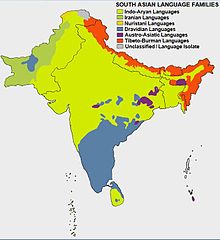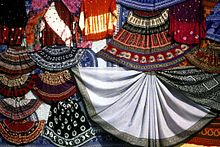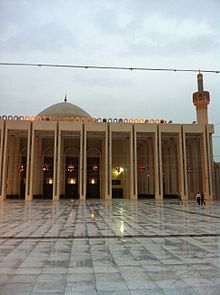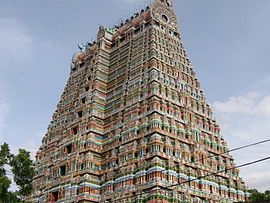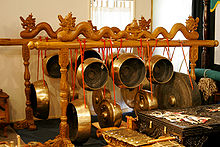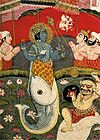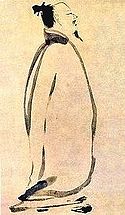- Culture of Asia
-
The culture of Asia is human civilization in [Asia]. It features different kinds of cultural heritage of many nationalities, societies, and ethnic groups in the region, traditionally called a continen from a Western-centric perspective, of Asia. The region or "continent" is more commonly divided into more natural geographic and cultural subregions, including the Central Asia, East Asia, South Asia (the "Indian subcontinent"), North Asia, West Asia and Southeast Asia. Geographically, Asia is not a distinct continent; culturally, there has been little unity or common history for many of the cultures and peoples of Asia.
Asian art, music, and cuisine, as well as literature, are important parts of Asian culture. Eastern philosophy and religion also plays a major role, with Hinduism, Taoism, Confucianism, Buddhism, Christianity and Islam; all playing major roles. One of the most complex parts of Asian culture is the relationship between traditional cultures and the Western world.
Contents
Nationalities and ethnic groups
There are an abundance of ethnic groups throughout Asia, with adaptations to the climate zones of Asia, which can perate, subtropical or tropical. The ethnic groups have adapted to mountains, deserts, grasslands, and forests. On the coasts of Asia, the ethnic groups have adopted various methods of harvest and transport. Some groups are primarily hunter-gatherers, some practice transhumance (nomadic lifestyle), others have been agrarian/rural for millennia and others are becoming industrial/urban. Some groups/countries of Asia are completely urban (Singapore and Hong Kong). The colonization of Asia was largely ended in the twentieth century, with national drives for independence and self-determination across the continent.
East Asia
East Asia is usually thought to consist of China, Japan, North Korea, South Korea and Taiwan. The dominant influence historically has been China, though in modern times, cultural exchange has flowed more bi-directionally. Major characteristics of this region include shared Chinese-derived language characteristics, as well as shared religion, especially Buddhism and Taoism. There is also a shared social and moral philosophy derived from Confucianism.
The Chinese script is the oldest continuously used writing system in the world, and has long been a unifying principle of East Asia, as the medium for conveying Chinese culture. It was historically used throughout the region, and is still used in by ethnic Chinese throughout the world, as well as in Japan and to a lesser extent South Korea. Within China, the meanings of the characters remain generally unchanged from region to region, though their pronunciations differ. This is because Classical Chinese was long the written language of all China, and was replaced by Mandarin as the national written language in the twentieth century. For example, a Cantonese and a Mandarin speaker cannot hold a conversation, but if they are educated they can understand each other in writing, as they both learned to read and write Mandarin in school. But due to the simplification of Chinese characters in the 1950s in mainland China, people from the areas like Taiwan and Hongkong can hardly understand the simplified version characters without any study beforehand, while people from mainland China can understand nearly all the traditional characters since they are still used in many private sectors in mainland China. Both sides can not write the other side's version without study, though people can learn it very fast and get used to it within a few months.
Chinese writing was passed on to Korea, Japan and Vietnam. In Japan, the set of Chinese characters used are called Kanji and form a major component of the Japanese writing system. In the 9th century, Japanese developed their own writing systems called Kana (Hiragana and Katakana) which support Kanji script to suit Japanese language. Today, both ideograph Kanji and syllabary Kana is used in mixture in Japanese. In Vietnam, Chinese script (Han Tu) was used during the millennium under the influence of China, with the vernacular Chu Nom script are also used since 13th century. However, this has now (since the early 20th century) been replaced completely by the Latin Alphabet-based Quoc Ngu. In the 15th century, Koreans also developed their own writing system called Han-gul which is more adapted script to write Korean.
In these cultures, especially in China and Japan the educational level of person is traditionally measured by the quality of his or her calligraphy, rather than diction, as is sometimes the case in the west.
Though Korea and Japan are not Chinese speaking regions, their languages have been influenced by Chinese to some extent. Even though their writing systems have changed over time, Chinese is still found in the historical roots of many borrowed words. Though in modern times, Chinese is also influenced by other Asian languages, especially modern technical and political terms created in Japan to represent western concepts. For example, 文化(culture), 文明(civilization), 人民(people), 経済(economy), 共和(republic) and 哲学(philosophy) are borrowed words from Japanese to Chinese. (ja:和製漢語, zh:和製漢語)
Apart from the unifying influence of Confucianism, Buddhism, Chinese characters, and other Chinese Cultural Influences, there is nevertheless much diversity between the countries of the region such as different religions, national costumes, languages, writing systems, cuisines, traditional music and so on.
South Asia (Indian Subcontinent)
The four South Indian states and northern parts of Sri Lanka share a Dravidian culture, due to the prominence of Dravidian languages there. Bangladesh and the state of West Bengal share a common heritage and culture based on the Bengali language.
Nepal, Bhutan, the states of Sikkim, Arunachal Pradesh, Ladakh in the state of Jammu and Kashmir and parts of the states of Himachal Pradesh, Uttaranchal have a great cultural similarity to Tibet, Tibetan Buddhism being the dominant religion there. Finally the border states of Assam, Meghalaya, Mizoram, Manipur, Nagaland and Tripura have cultural affinities with South East Asia.
Hinduism, Buddhism, Jainism and Sikhism, the four major world religions founded in the region that is today's India, are spread throughout the subcontinent. Islam and Christianity also have significant region-specific histories. While 80% of Indians are Hindus and Nepal is a Hindu-majority State, Sri Lanka and Bhutan have a majority of Buddhists. Islam is the predominant religion of Bangladesh, Pakistan.
Indo-Aryan languages are spoken in Pakistan, Sinhalese of Sri Lanka and most of North, West and East India and Nepal. Dravidian languages are spoken in South India and in Sri Lanka by Tamil community. Tibeto-Burman languages are spoken in the North and North East India.
Southeast Asia
Southeast Asia consists of Vietnam and Maritime Southeast Asia. Southeast Asia is usually thought to include Burma, the Philippines, Thailand, Laos, Cambodia, Mainland Southeast Asia, Malaysia, Singapore, East Timor, Brunei and Indonesia. The region has been greatly influenced by the cultures and religions of India and China as well as the religions Islam and Christianity from Southwest Asia. Southeast Asia has also had a lot of Western influence due to the lasting legacy of colonialism. One example is the Philippines which has been heavily influenced by America and Spain due to nearly four centuries of foreign rule.
A common feature found around the region are stilt houses. Another shared feature is rice paddy agriculture, which originated in Southeast Asia thousands of years ago. Dance is also a very important feature of the culture, utilizing movements of the hands and feet perfected over thousands of years. Furthermore, the arts and literature of Southeast Asia is very distinctive as some have been influenced by Indian, Hindu, Chinese, Buddhist and Islamic literature.
West Asia
West Asia largely corresponds with the term the Middle East. However, the usage of the term Middle East is slowly fading out due to its obvious Eurocentrism as the region is east of Europe but it is south of Russia and west of India. West Asia consists of Turkey, Syria, Armenia, Georgia, Azerbaijan, Iraq, Iran, Lebanon, Jordan, Israel, Palestinian territories, Saudi Arabia, Kuwait, Bahrain, Qatar, United Arab Emirates, Oman and Yemen. The region is the historical birthplace of Abrahamic religions: Judaism, Christianity and Islam. Today, the region is almost 93% Muslim and is dominated by Islamic politics. Culturally, the region is Turkish, Arab and Persian. Iraq is a unique example of Persian, Turkish and Arab culture. Many of the Arab countries are desert and thus many nomadic groups exist today. On the other hand, modern metropolises also exist on the shifting sands: Abu Dhabi, Amman, Riyadh, Doha and Muscat. The climate is mostly of a desert climate however some of the coastal regions have a more temperate climate. On the other hand, the Anatolian plateau (Turkey, Georgia, Armenia) is very mountainous and thus has a more temperate climate while the coasts have a distinct mediterranean climate. The Persian Plateau (Iran, Azerbaijan, Afghanistan, Iraq and Turkmenistan) has a diverse terrain, it is mainly mountainous with portions of desert, steppe and tropical forest on the coast of the Caspian Sea. West Asian cuisine is a fusion of Turkish, Arabian, North African and Persian cuisine. It is immensely rich and diverse. The literature is also immensely rich with Arabic, Turkish and Persian literature dominating. One of the most famous literary works of West Asia is 1001 Arabian Nights.
Central Asia
Central Asia is deemed to consist of the five former Soviet Socialist Republics: Kazakhstan, Kyrgyzstan, Tajikstan, Uzbekistan and Turkmenistan. However, Iran, Afghanistan and Pakistan are sometimes included. The predominant religion in Central Asia is Islam. Central Asia has a long rich history mainly based on its historic position on the famous Silk Road. It has been conquered by Mongols, Persians, Tatars, Russians, Sarmatian and thus has a very distinct, vibrant culture. The culture is influenced by Chinese, South Asian, Persian, Arabian, Turkish, Russian, Sarmatian and Mongolian cultures. The people of the steppes of Central Asia have historically been nomadic people but a unifying state was established in Central Asia in the 16th century: The Kazakh Khanate.
The music of Central Asia is rich and varied and is appreciated worldwide. Meanwhile, Central Asian cuisine is one of the most prominent cuisines of Asia, with cuisines from Pakistan, India, China and Azerbaijan especially showing significant influence from the foods of Central Asia. One of the most famous Central Asian foods are manti and pilaf.
The literature of Central Asia is linked with Persian literature as historically it has been part of the Persian Empire for a lot of its history. Furthermore, being at the junction of the Silk Road it has numerous Chinese, Indian and Arabian literary works.
North Asia
For the most part, North Asia is considered to be made up of the Asian part of Russia solely. The geographic region of Siberia was the historical land of the Tatars in the Siberia Khanate. However Russian expansion essentially undermined this and thus today it is under Russian rule. There are roughly 40 million people living in North Asia.
Architecture
Japan: Wooden Temples, Shrines, Castles
In Japan, some wooden temples of Nara are over 1,000 years old. Although some parts have been replaced, much of the original structure is said to be intact. Ise Shrine, also a wooden structure, is completely rebuilt in exactly the same style every 20 years. The primary reason behind this may relate to the ancient Japanese imitation of rebirth in nature and the impermanence of all things. This practice also helps to preserve traditional carpentry skills and techniques (building without nails). Wooden castles were destroyed or dismantled during the shift from feudalism in the Meiji Restoration. Intact examples are Himeji Castle (17th century) and Hikone Castle (15th century). Reconstructed examples are Osaka Castle and Himeji Castle.
Other cultures might build from stone, but the jungles and forests might overgrow the buildings, as in Angkor Wat.
Art
 Detail of Dragon Throne used by the Qianlong Emperor of China, Forbidden City, Qing Dynasty. Artifact circulating in U.S. museums on loan from Beijing
Detail of Dragon Throne used by the Qianlong Emperor of China, Forbidden City, Qing Dynasty. Artifact circulating in U.S. museums on loan from Beijing
Visual arts
Crafts
- See also: Vietnamese Embroidery Art
Performing arts
Music
Main article: Asian musicHarmonic music can follow the pentatonic scale as well as the twelve-tone scale; percussive music can use cymbals as well as gongs, in Asia.
South Asia
Main article: South Asian musicIn the Punjab region of India and Pakistan, bhangra music is very popular.
East Asia
Main article: East Asian musicWest Asia
Central Asia
Main article: Central Asian musicThe music of Central Asia is as vast and unique as the many cultures and peoples who inhabit the region. The one constant throughout the musical landscape is Islam, which defines the music's focus and the musicians' inspiration.
Principal instrument types are two- or three-stringed lutes, the necks either fretted or fretless; fiddles made of horsehair; flutes, mostly open at both ends and either end-blown or side-blown; and Jews' harps, either metal or, often in Siberia, wooden. Percussion instruments include frame drums, tambourines, and kettledrums.
Instrumental polyphony is achieved primarily by lutes and fiddles. On the other hand, vocal polyphony is achieved in different ways: Bashkirs hum a basic pitch while playing solo flute.
Southeast Asia
Main article: Southeast Asian musicDance
In the Punjab region of India and Pakistan, bhangra dance is very popular. The bhangra is a celebration of the harvest. The people dance to the beat of a drum while singing and dancing.
In Thailand which is never colonized by Western countries, has retained cultural connections with the two of the great centers of Asian civilizations, India and China. Dances of Burma, a country which was colonized only for a brief period, also retain very strong influences from these cultures.
In Southeast Asia, dance is an integral part of the culture; the styles of dance vary from island to island. There are courtly dances, found, for example, wherever there are Rajahs and princesses. There are also dances of celebration. For example, according to oral history, in 1212, when 10 Bornean datus left the rule of Sri Vijayan empire on Borneo, they sailed away and negotiated settlement rights with the chieftain of the Negritos on the island of Panay. In commemoration of the agreement, they danced; the Negritos danced as well.
Martial arts
Main articles: Martial arts, History of martial arts, Asian martial arts (origins), and Modern history of East Asian martial artsMythology and folklore
The story of Great Floods find reference in most of the regions of Asia. The Hindu mythology tells about an Avatar of God Vishnu in the form of a fish who warned Manu of a terrible flood. In ancient Chinese mythology Shan Hai Jing, the Chinese ruler Da Yu had to spend ten years to control a deluge which swept out most of the ancient China and was aided by the goddess Nuwa who literally "fixed" the "broken" sky through which huge rains were pouring.
The regions of Asia has a rich variety of mythical fauna. Japan has Nekomatas, cats with two tails and having magical powers; whereas Balinese mythology has child-eating Rangdas. Hindu mythology have Pishachas haunting the cremation grounds to eat half-burnt human corpses, and Bhuts haunting the desolate places. Asia has a rich tradition of folklores and storytelling. In the Indian subcontinent, the Panchatantra, a collection of fables 200 BC, has remained a favorite for 2000 years.
Languages
Asia is a continent with great linguistic diversity, and is home to various language families and many language isolates. A majority of Asian countries have more than one language that is natively spoken. For instance, according to Ethnologue over 600 languages are spoken in Indonesia while over 100 are spoken in the Philippines. The official figure of 'mother tongues' spoken in India is 1683, of which an estimated 850 are in daily use. Korea, on the other hand, is home to only one language.
The main language families found in Asia, along with examples of each, are:
- Austro-Asiatic: Khasi, Khmer, Mundari, Vietnamese
- Austronesian: Atayal, Cebuano, Cham, Ilokano, Indonesian, Javanese, Malay, Paiwan, Sundanese, Tagalog, Tetum
- Dravidian: Kannada, Malayalam, Tamil, Telugu
- Indo-Asiatic: Armenian, Bengali, English, Gujarati, Marathi, Hindi, Kurdish, Nepali, Pashto, Persian, Portuguese, Punjabi, Russian, Konkani, Sanskrit, Tajik, Urdu
- Japonic: Japanese, Okinawan
- Sino-Tibetan:
- Tai–Kadai: Lao, Thai
- Turkic: Azeri, Kazakh, Kyrgyz, Tatar, Turkish, Turkmen, Uzbek
- Afro-Asiatic: Arabic, Aramaic, Canaanite, Berber, Hebrew
Other languages that do not belong to the above groups include Ainu, Burushaski, Georgian, Hmong, Korean, Mongolian, various Romance-based creoles (Chavacano, Macanese, and Kristang) and many others.
Literature
Classical Indian literature
The famous poet and playwright Kālidāsa wrote two epics: Raghuvamsha (Dynasty of Raghu) and Kumarasambhava (Birth of Kumar Kartikeya); they were written in Classical Sanskrit rather than Epic Sanskrit. Other examples of works written in Classical Sanskrit include the Pānini's Ashtadhyayi which standardized the grammar and phonetics of Classical Sanskrit. The Laws of Manu is an important text in Hinduism. Kālidāsa is often considered to be the greatest playwright in Sanskrit literature, and one of the greatest poets in Sanskrit literature, whose Recognition of Shakuntala and Meghaduuta are the most famous Sanskrit plays. He occupies the same position in Sanskrit literature that Shakespeare occupies in English literature. Some other famous plays were Mricchakatika by Shudraka, Svapna Vasavadattam by Bhasa, and Ratnavali by Sri Harsha. Later poetic works include Geeta Govinda by Jayadeva. Some other famous works are Chanakya's Arthashastra and Vatsyayana's Kamasutra.
Classical Chinese literature
In Tang and Song dynasty China, famous poets such as Li Bai authored works of great importance. They wrote shī (Classical Chinese: 詩) poems, which have lines with equal numbers of characters, as well as cí (詞) poems with mixed line varieties.
Classical Japanese literature
In the early eleventh century, court lady Murasaki Shikibu wrote Tale of the Genji considered the masterpiece of Japanese literatures and an early example of a work of fiction in the form of a novel. Early-Modern Japanese literature (17th–19th centuries) developed comparable innovations such as haiku, a form of Japanese poetry that evolved from the ancient hokku (Japanese language: 発句) mode. Haiku consists of three lines: the first and third lines each have five morae (the rough phonological equivalent of syllables), while the second has seven. Original haiku masters included such figures as Edo period poet Matsuo Bashō (松尾芭蕉); others influenced by Bashō include Kobayashi Issa and Masaoka Shiki.
Classical Persian literature
Classical Arabic literature
Classical Turkish literature
Classical Pakistani literature
Pakistani literature has a rich history, and draws influences from both Muslim and Indian literary traditions. The country has produced a large number of famed poets especially in the national Urdu language. The famous Muhammad Iqbal, regarded as the national poet, was often called "The Poet of the East" (Shair-e-Mashriq).
Modern literature
The polymath Rabindranath Tagore, a Bengali poet, dramatist, and writer from India, became in 1913 the first Asian Nobel laureate. He won his Nobel Prize in Literature for notable impact his prose works and poetic thought had on English, French, and other national literatures of Europe and the Americas. He also wrote Jana Gana Mana the national anthem of India as well as Amar Shonar Bangla the national anthem of Bangladesh. Later, other Asian writers won Nobel Prizes in literature, including Yasunari Kawabata (Japan, 1966), and Kenzaburo Oe (Japan, 1994).
Philosophy
Asian philosophical traditions originated in India and China, and has been classified as Eastern philosophy covering a large spectrum of philosophical thoughts and writings, including those popular within India and China. The Indian philosophy include Hindu and Buddhist philosophies. They include elements of non-material pursuits, whereas another school of thought Cārvāka, which originated in India, and was propuned by Charvak around 2500 years before, preached the enjoyment of material world. Middle Eastern philosophy include Islamic philosophy as well as Persian philosophy.
During the 20th century, in the two most populous countries of Asia, two dramatically different political philosophies took shape. Gandhi gave a new meaning to Ahimsa, and redefined the concepts of nonviolence and nonresistance. During the same period, Mao Zedong’s communist philosophy was crystallized.
Religions
Hinduism, Buddhism, Jainism and Sikhism originated in India, a country of South Asia. In East Asia, particularly in China and Japan, Confucianism, Taoism, Zen Buddhism and Shinto took shape. Other religions of Asia include the Bahá'í Faith, Shamanism practiced in Siberia, and Animism practiced in the eastern parts of the Indian subcontinent.
Today 30% of Muslims live in the South Asian region, mainly in Pakistan, India, Bangladesh and the Maldives. The world's largest single Muslim community (within the bounds of one nation) is in Indonesia. There are also significant Muslim populations in the Philippines, Brunei, Malaysia, China, Russia, Iran, Central Asia and West Asia.
In the Philippines and East Timor, Roman Catholicism is the predominant religion; it was introduced by the Spaniards and the Portuguese, respectively. In Armenia, Armenian Apostolic Church is the predominant religion. Various Christian sects have adherents in portions of the Middle East.
Judaism is the major religion of Israel.
A large majority of people in the world who practice a religious faith practice one founded in Asia.
Religions founded in Asia and with a majority of their contemporary adherents in Asia include:
- Bahá'í Faith: slightly more than half of all adherents are in Asia
- Buddhism: Cambodia, Nepal, China, Japan, Korea, Laos, Malaysia, Mongolia, Burma, Singapore, Sri Lanka, Thailand, Vietnam, parts of northern, eastern, and western India, and parts of central and eastern Russia (Siberia).
- Mahayana Buddhism: China, Japan, Korea, Malaysia, Singapore, Vietnam.
- Theravada Buddhism: Cambodia, parts of China, Laos, mainly northern parts of Malaysia, Burma, Sri Lanka, Thailand, as well as parts of Vietnam.
- Vajrayana Buddhism: Parts of China, Mongolia, parts of northern and eastern India, parts of central and eastern Russia and Siberia.
- Hinduism: India, Nepal, Bangladesh, Sri Lanka, Pakistan, Malaysia, Singapore, Bali.
- Islam: Central, South and Southwest Asia, Indonesia, Malaysia, Philippines, and Brunei.
- Ahmadiyya Islam: Pakistan, Bangladesh, India.
- Shia Islam: largely to specific Iran, Azerbaijan, parts of Iraq, Bahrain, parts of Afghanistan, parts of India, parts of Pakistan.
- Sunni Islam: dominant in the rest of the regions mentioned above.
- Jainism: India
- Shinto: Japan
- Sikhism: India and Malaysia
- Taoism (Daoism): China, Vietnam, Singapore, and Taiwan
- Zoroastrianism: Iran, India, Pakistan
- Shamanism: Japan (Itako), Korea, Siberia
- Animism: Eastern India
Religions founded in Asia that have the majority of their contemporary adherents in other regions include:
- Christianity (Lebanon, Syria, Palestine, Armenia, Georgia, South Korea, Singapore, Malaysia, Indonesia, East Timor, Pakistan, India. Vietnam and the Philippines)
- Judaism (slightly fewer than half of its adherents reside in Asia; Israel, Iran, India, Syria.) (see Mizrahi Jews)
Festivals & celebrations
Asia has a variety of festivals and celebrations. In China, Chinese New Year, Dragon Boat Festival, and Mid-Autumn Moon Festival are traditional holidays, while National Day is a holiday of the People's Republic of China.
In Japan, Japanese New Year, National Foundation Day, Children's Day, O-bon, The Emperor's Birthday, and Christmas are popular. According to Japanese syncretism, most Japanese celebrate Buddhism's O-bon in midsummer, Shinto's Shichi-Go-San in November, and Christmas and Hatsumoude in winter together.
In India, Republic Day and Independence Day are important national festivals celebrated by people irrespective of faith. Major Hindu festivals of India include Diwali, Dussehra or Daserra, Holi, Makar Sankranti, Pongal, Mahashivratri, Ugadi, Navratri, Ramanavami, Baisakhi, Onam, Rathayatra, Ganesh Chaturthi, and Krishna Janmastami. Islamic festivals such as Eid ul-Fitr and Eid ul-Adha, Sikh festivals such as Vaisakhi, and Christian festivals such as Christmas, are also celebrated in India.
The Philippines is also tagged as the "Fiesta Country" because of its all-year-round celebrations nationwide. There is a very strong Spanish influence in their festivals, thus making the Philippines, distinctively occidental. Fiesta is the term used to refer to a festival. Most of these fiestas are celebrated in honor of a patron Saint. To summarize it all, at least every municipality has a fiesta. Some prime examples include Sinulog from Cebu and Iloilo's Dinagyang.
Food & drinks
In many parts of Asia, rice is a staple food, and it is mostly served steamed or as a porridge known as congee. China is the world largest producer and consumer of rice. In China, Japan, Korea and Vietnam, people usually use chopsticks to eat traditional food, but shapes of chopsticks are different in these countries. For example, Japanese chopsticks are spire to eat bony fish easily. Korean chopsticks are made of metal. It is said that wood is rarer than metal on the Korean Peninsula and metal chopsticks can prevent poisoning. An island nation surrounded by ocean, Japan has various fish dishes. Especially, fresh raw fish cuisines are very popular in Japan and around the world, such as Sushi and Sashimi. In India, people often eat food with their hands, and many spices are used in every dish. Most spices originated around India or neighboring countries such as Sri Lanka. Durians are a common fruit in Southeast Asia, which, Alfred Russel Wallace, attested to its delicious flavor as worth the entire cost of his trip there. In every special Filipino banquet, people will see a unique set of dishes compared to other Asian cuisine. Because of the country's long years of colonization and interactions with other neighboring cultures and nations, it has inherited Latin, Malay, Chinese, and American influences to its people's local blend.
-
Chicken tikka, a well-known dish across the globe, reflects the amalgamation of South Asian cooking styles with those from Central Asia.
-
Tamil cuisine is popular in South India, Sri Lanka and South-East Asia.
Culture by people
- Ainu people
- Afghan people
- Arab people
- Armenian people
- Assyrian people
- Aryan
- Azerbaijani People
- Baloch people
- Bengali people
- Burmese people
- Chinese people
- Cambodian people
- Dravidian people
- Filipino people
- Hmong people
- Hong Kong people
- Iranian people
- Indonesian people
- Japanese people
- Korean people
- Lao people
- Macanese people
- Miao people
- Mongolian people
- Tibetan people
- Russian people
- Sindhi people
- Tajik people
- Turkic peoples
- Taiwanese people
- Thai people
- Vietnamese people
See also
Notes
^ John Lindley (1889), Treasury of Botany vol 1. p. 435. Longmans, Green, & Co; New and rev. ed edition (1889)
External links
- Yin Yu Tang: A Chinese Home showcases Chinese culture through a detailed examination of a family residence located in the Anhui province of East China.
- Fukuoka Asian Culture Prize was established to honor the outstanding work of individuals or groups/organizations to preserve and create unique and diverse cultures of Asia.
Links to related articles Asia topics Culture · Demographics · Economy · Geography · History · Politics
Culture of Asia Sovereign
states- Afghanistan
- Armenia
- Azerbaijan
- Bahrain
- Bangladesh
- Bhutan
- Brunei
- Burma (Myanmar)
- Cambodia
- People's Republic of China
- Cyprus
- East Timor (Timor-Leste)
- Egypt
- Georgia
- India
- Indonesia
- Iran
- Iraq
- Israel
- Japan
- Jordan
- Kazakhstan
- North Korea
- South Korea
- Kuwait
- Kyrgyzstan
- Laos
- Lebanon
- Malaysia
- Maldives
- Mongolia
- Nepal
- Oman
- Pakistan
- Philippines
- Qatar
- Russia
- Saudi Arabia
- Singapore
- Sri Lanka
- Syria
- Tajikistan
- Thailand
- Turkey
- Turkmenistan
- United Arab Emirates
- Uzbekistan
- Vietnam
- Yemen
States with limited
recognition- Abkhazia
- Nagorno-Karabakh
- Northern Cyprus
- Palestine
- Republic of China (Taiwan)
- South Ossetia
Dependencies and
other territoriesCategories:- Asian culture
Wikimedia Foundation. 2010.

